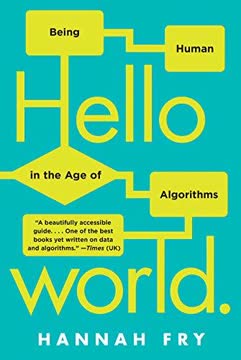重点摘要
1. 数学错误可能带来深远的现实后果
解释一个笑话为什么好笑是件艰难的任务。
数学错误无处不在。 从日常计算到复杂的工程项目,数学错误可能导致重大后果。例如,1999年,NASA因公制和英制单位转换错误,损失了一台价值1.25亿美元的火星气候探测器。同样,药物剂量计算中的一个小数点错误可能导致患者接受致命剂量。
这些错误通常源于:
- 沟通不畅
- 缺乏细节关注
- 对计算过于自信
- 未能仔细检查结果
这些错误的影响范围从小的不便到灾难性的失败,突显了数学准确性在生活各个方面的重要性。
2. 计算中的小错误可能导致灾难性结果
各种看似无害的数学错误可能带来奇怪的后果。
小错误可能滚雪球。 在复杂系统中,即使是一个小的数学错误也可能传播和放大,导致灾难性结果。1940年塔科马海峡大桥的倒塌就是一个典型例子。桥梁设计中的一个轻微误算导致其在中等风速下的壮观倒塌。
其他例子包括:
- 伦敦千禧桥因未预见的共振效应而危险地摇晃
- 哈勃太空望远镜因镜面微小缺陷导致初始图像模糊
- 瓦萨战舰因稳定性计算错误在首航时沉没
这些案例强调了在工程和科学工作中进行严格检查和测试的重要性,以及理解即使是最小错误的潜在后果的重要性。
3. 四舍五入和单位转换是常见的错误来源
宇宙有138亿年历史。但如果你在出版后三年阅读这句话,这并不意味着宇宙现在有138亿零3年历史。
精度很重要。 四舍五入错误和单位转换错误是最常见的数学错误之一。这些看似微小的问题在处理大数或复杂计算时可能导致显著差异。
关键点包括:
- 四舍五入可能在迭代计算中引入累积误差
- 单位转换需要仔细注意以保持准确性
- 报告结果时应考虑有效数字
- 不同的四舍五入规则可能导致不同的结果
昂贵的四舍五入和转换错误的例子包括温哥华证券交易所的错误指数计算和“吉姆利滑翔机”事件,其中一架加拿大航空公司的航班因磅和千克之间的混淆在飞行中耗尽燃料。
4. 统计和概率常常被误解和滥用
相关性永远不足以证明一件事导致了另一件事。
误解的数据会误导。 统计和概率是强大的工具,但它们经常被误解和误用。这可能导致错误的结论和糟糕的决策,从医学到金融领域都是如此。
常见的陷阱包括:
- 混淆相关性和因果关系
- 误解p值和统计显著性
- 未能考虑抽样偏差
- 忽视样本量的重要性
例如,“检察官谬误”导致了通过误导证据概率的错误定罪。同样,对金融风险模型的误解也促成了2008年金融危机。正确的统计教育和批判性思维对于避免这些错误至关重要。
5. 计算机编程错误可能导致重大灾难
编程只是形式化的数学思维和过程。
代码可能致命。 随着我们的世界越来越依赖软件,编程错误可能带来深远的后果。从小故障到灾难性失败,这些错误可能影响数百万人并造成数十亿美元的损失。
著名的例子包括:
- 阿丽亚娜5号火箭因软件错误爆炸
- Therac-25放射治疗机过量辐射
- Y2K错误及其相关成本
编程错误通常源于:
- 测试和质量保证不足
- 未经适当调整而重复使用代码
- 未能预见边缘情况或异常输入
- 程序员和客户之间的沟通不畅
为了减轻这些风险,软件开发中必须有严格的测试程序、代码审查以及鼓励错误报告和纠正的文化。
6. 人类直觉在处理大数时常常失效
作为人类,我们不擅长判断大数的大小。
规模挑战感知。 我们的大脑进化来处理小数和线性关系,因此很难直观地理解非常大的数或指数增长。这种限制可能导致糟糕的决策和对复杂系统的误解。
一些反直觉的大数例子:
- 一百万秒大约是11.5天,而一十亿秒接近32年
- 一百万美元和一十亿美元之间的差异约为9.99亿美元
- 可能的国际象棋游戏数比可观测宇宙中的原子还多
为了克服这一限制,我们需要使用科学记数法、类比和可视化等工具和技术来更好地理解和传达大数和复杂关系。
7. 随机性难以实现且容易被误解
获得高质量的伪随机数仍然是一个问题。
真正的随机性难以捉摸。 生成和解释随机数比看起来更具挑战性。计算机作为确定性机器,难以在没有外部输入的情况下生成真正的随机数。这对密码学、模拟和统计分析有影响。
关于随机性的关键点:
- 伪随机数生成器可能有隐藏的模式
- 人类尝试随机性往往是可预测的
- 随机性的统计测试可能被欺骗
- 真正的随机性通常需要物理过程(例如放射性衰变)
对随机性的误解可能导致科学研究中的错误、赌博谬误和计算机安全系统中的漏洞。认识到我们对随机性的直觉局限性对于准确分析和决策至关重要。
8. 金融系统容易受到数学疏忽的影响
即使是审计员也不能幸免。
金钱放大错误。 金融系统严重依赖复杂的数学模型和算法。这些系统中的错误可能带来广泛的经济后果,影响个人、公司和整个经济体。
金融数学错误的例子:
- 2008年金融危机,部分由于风险模型的缺陷
- 高频交易故障导致市场波动
- 会计错误导致公司估值错误
- 国际交易中的货币转换错误
为了减轻这些风险,金融机构和监管机构必须:
- 实施强大的错误检查系统
- 确保金融模型的透明度
- 进行定期审计和压力测试
- 提高专业人员的数学和金融素养
9. 工程失败往往源于忽视数学细节
有时那些看似无关紧要的被舍去或平均掉的部分实际上非常重要。
设计中的细节很重要。 工程项目涉及复杂的计算和模型。忽视看似微小的数学细节可能导致灾难性失败,造成生命和资源的损失。
由于数学错误导致的著名工程失败:
- 凯悦酒店空中走廊倒塌
- Sleipner A海上平台沉没
- 火星气候探测器坠毁
工程数学错误的常见来源:
- 单位转换错误
- 迭代计算中的四舍五入错误
- 对材料特性的误解
- 未能考虑所有相关变量
为了防止这些失败,工程实践必须包括严格的同行评审、广泛的测试以及鼓励质疑和仔细检查假设和计算的文化。
10. 数据收集和分析容易受到偏见和误解的影响
即使是审计员也不能幸免。
偏见扭曲结果。 数据收集和分析过程充满了可能导致错误结论的潜在陷阱。偏见可能在每个阶段渗入,从研究设计到数据解释。
数据分析中的常见偏见:
- 抽样中的选择偏差
- 解释结果时的确认偏差
- 报告发现时的发表偏倚
- 历史数据中的幸存者偏差
为了应对这些问题:
- 使用严格的统计方法
- 尽可能实施盲法和双盲研究
- 鼓励重要研究的重复
- 在数据共享和分析中培养透明文化
认识和解决这些偏见对于在科学研究到商业分析等领域中产生可靠和可操作的见解至关重要。
最后更新日期:
FAQ
What's Humble Pi: A Comedy of Maths Errors about?
- Exploring math mistakes: The book delves into real-world mathematical errors, illustrating their significant consequences.
- Humorous anecdotes: Author Matt Parker uses humor to make complex mathematical concepts accessible and entertaining.
- Real-life implications: Each chapter highlights the importance of mathematics in everyday life, from engineering to finance, and the far-reaching effects of errors.
Why should I read Humble Pi by Matt Parker?
- Engaging storytelling: Matt Parker combines humor with education, making it enjoyable for both math enthusiasts and those who typically shy away from the subject.
- Real-world relevance: The book illustrates how mathematical errors impact various fields, emphasizing the importance of accuracy in calculations and decision-making.
- Increased math appreciation: Readers gain a greater appreciation for mathematics and its societal role, understanding common pitfalls in mathematical reasoning.
What are the key takeaways of Humble Pi?
- Math is everywhere: Mathematics is integral to daily life, influencing technology, finance, and more.
- Mistakes are common: Everyone, including professionals, makes mistakes, which can lead to serious consequences.
- Learning from errors: The stories encourage readers to be more mindful and precise in their mathematical endeavors.
What are the best quotes from Humble Pi and what do they mean?
- "A million seconds from now is just shy of eleven days." This quote illustrates the difficulty humans have in comprehending large numbers.
- "You can’t count on it." This phrase reminds readers that even simple counting can lead to errors if not approached carefully.
- "Our human brains are simply not wired to be good at mathematics." This emphasizes the innate challenges people face with math, suggesting education and practice are essential.
What types of mathematical errors are discussed in Humble Pi?
- Engineering mistakes: Examples include the Millennium Bridge wobble and the 20 Fenchurch Street building's reflective glass issue.
- Statistical miscalculations: Misinterpretation of statistics can lead to wrongful convictions, as seen in a case involving flawed statistical evidence.
- Computer errors: Issues like the divide-by-zero error in computer systems illustrate how programming mistakes can have serious implications.
How does Humble Pi explain the importance of precision in mathematics?
- Real-world examples: Anecdotes demonstrate how small errors in calculations can lead to catastrophic outcomes, such as the Therac-25 radiation machine incident.
- Cautionary tales: Each story serves as a reminder of the need for precision and attention to detail in mathematical work.
- Encouraging mindfulness: The book advocates for a careful approach to mathematics, urging readers to double-check their work.
What is the significance of the title Humble Pi?
- Play on words: The title references the mathematical constant pi (π), symbolizing the complexity and unpredictability of mathematics.
- Emphasis on humility: "Humble" suggests that even confident mathematicians can make mistakes, highlighting the importance of humility.
- Connection to errors: The title encapsulates the theme of exploring mathematical errors and the lessons learned from them.
How does Humble Pi address the concept of probability?
- Human intuition vs. reality: Parker discusses how human intuition often fails in understanding probabilities, leading to misconceptions.
- Real-life examples: Anecdotes like the lottery illustrate how probability works in practice and how people misinterpret it.
- Encouraging critical thinking: Parker urges readers to think critically about probabilities and not rely solely on gut feelings.
How does Humble Pi illustrate the relationship between math and technology?
- Coding errors: Programming mistakes can lead to significant failures, such as the Knight Capital trading loss and the Ariane 5 rocket disaster.
- Randomness in computing: The book explores how computers generate random numbers and the challenges of achieving true randomness.
- Human error in tech: Human error is often the root cause of technological failures, highlighting the need for robust systems.
What are some notable examples of math errors discussed in Humble Pi?
- Ariane 5 Rocket Failure: A programming error caused the rocket to self-destruct shortly after launch due to a data type mismatch.
- Knight Capital's Trading Loss: A coding error led to a $461.1 million loss in a single day, illustrating financial devastation from small mistakes.
- Vancouver Stock Exchange Index: An error in calculation led to the index reporting a value half of what it should have been.
How does Humble Pi encourage a positive attitude towards mistakes?
- Embracing fallibility: Parker advocates for a culture that accepts mistakes as part of the learning process.
- Personal anecdotes: The author shares his own experiences with mathematical errors, making the message relatable.
- Promoting curiosity: By framing mistakes as opportunities for exploration, Parker inspires deeper engagement with mathematics.
What are the implications of math errors in finance, as discussed in Humble Pi?
- High-stakes environment: Even minor coding errors can lead to massive losses, as seen with Knight Capital.
- Impact on market stability: Errors in trading algorithms can disrupt market stability, leading to phenomena like the flash crash.
- Regulatory considerations: Parker emphasizes the need for oversight and accountability in the financial industry.
评论
《谦虚的π》因其对现实世界中数学错误的有趣探索而广受好评。读者们欣赏帕克的幽默、易懂的写作风格以及从工程、计算机和日常生活中广泛举例。许多人认为这本书既有趣又有教育意义,称赞它能够吸引那些通常不喜欢数学的人。一些批评意见包括后几章的重复性和缺乏连贯性。总体而言,评论者推荐这本书,认为它是一部愉快的读物,突显了数学在我们日常生活中的重要性。
Similar Books














